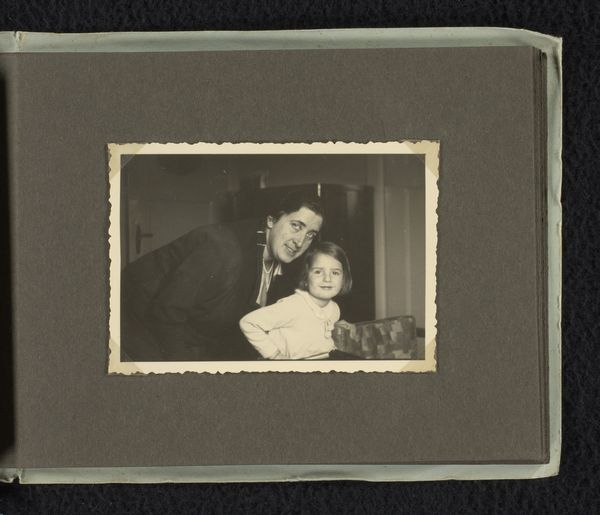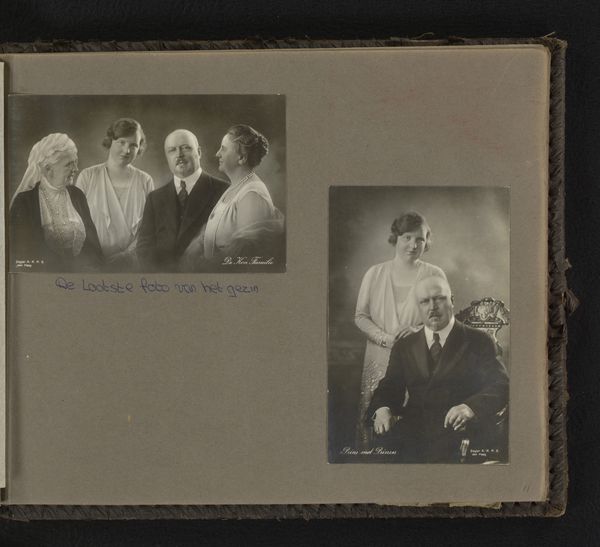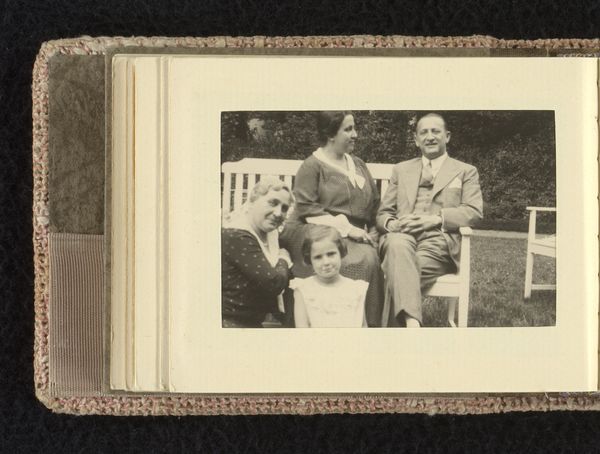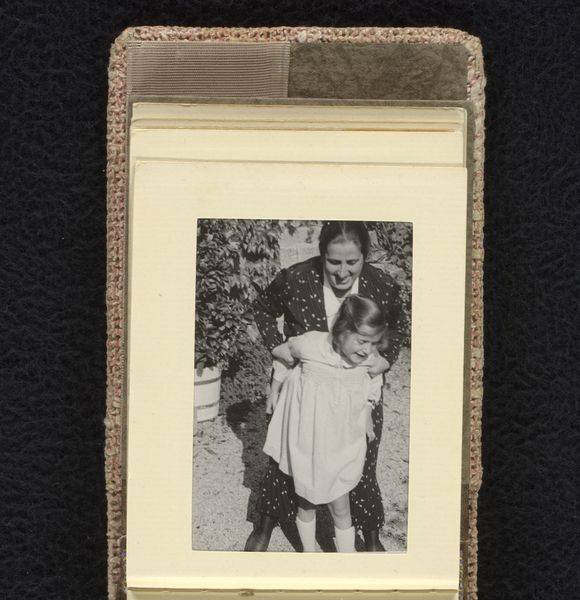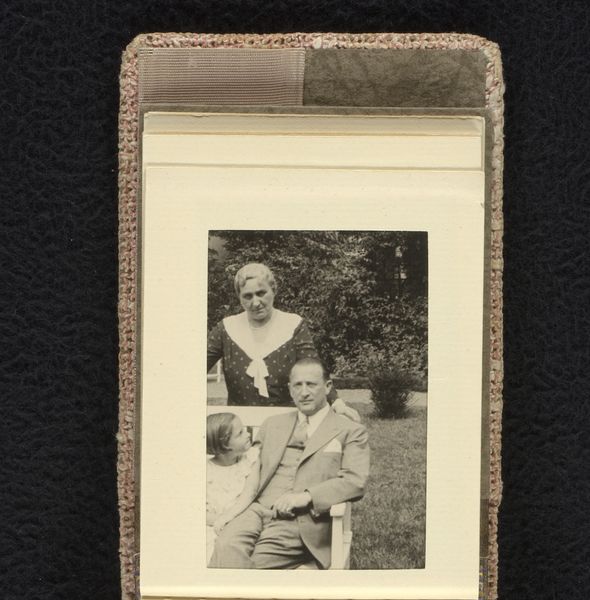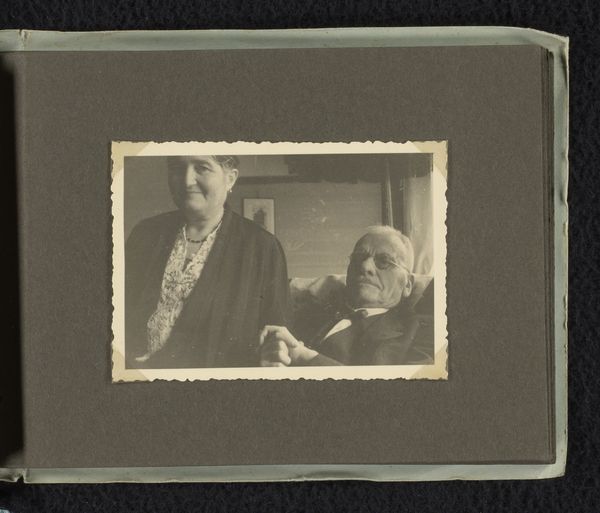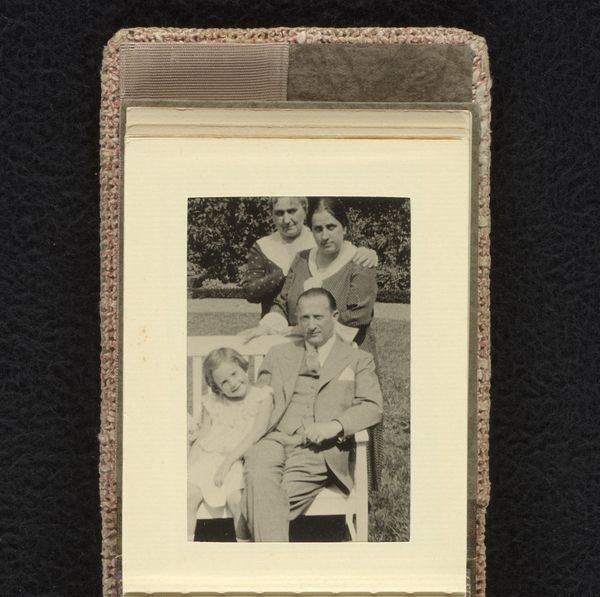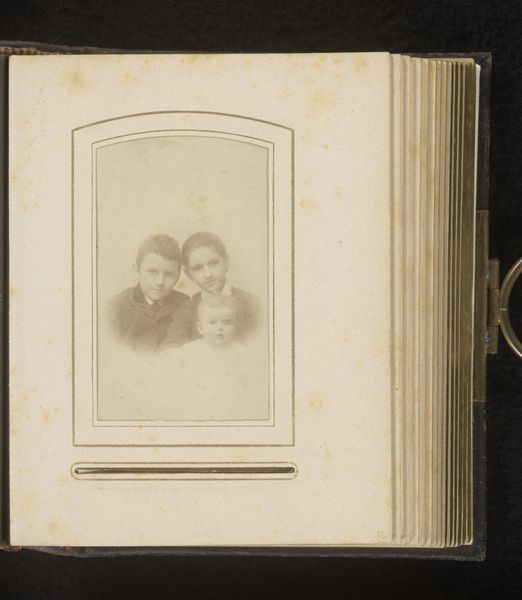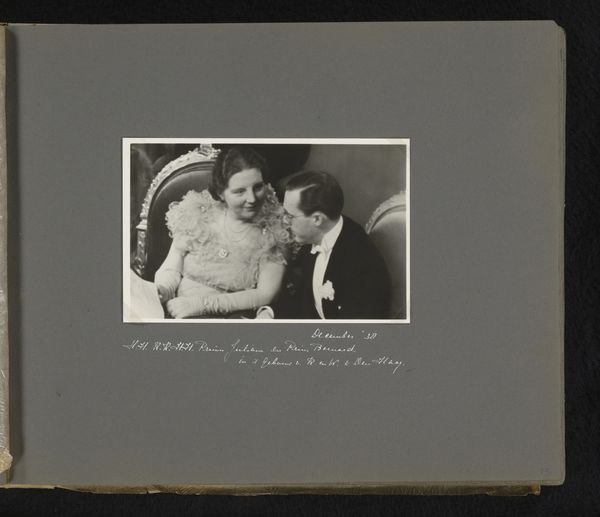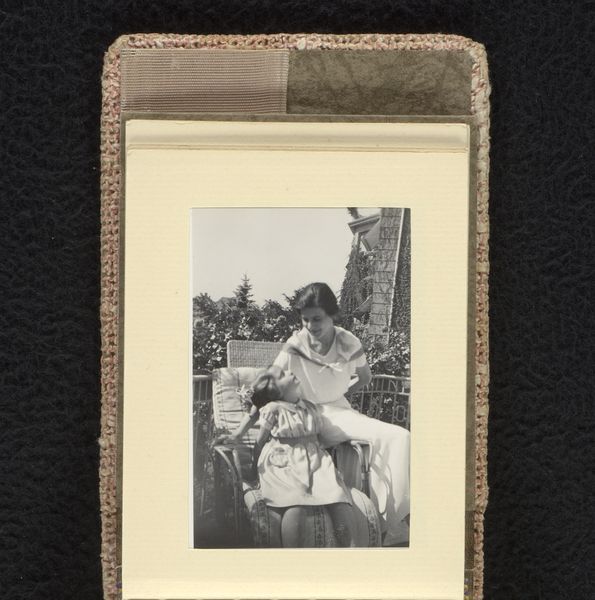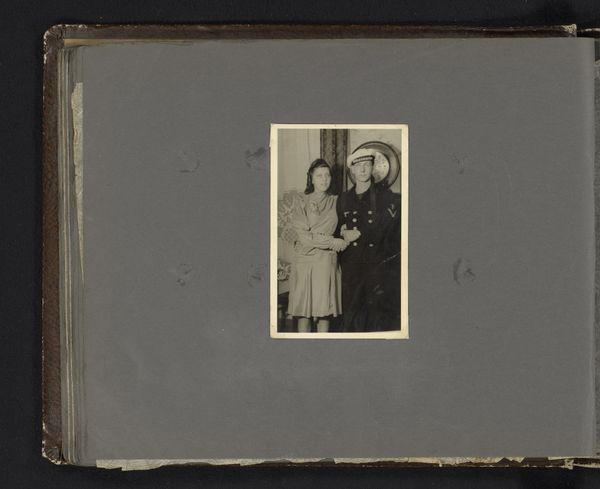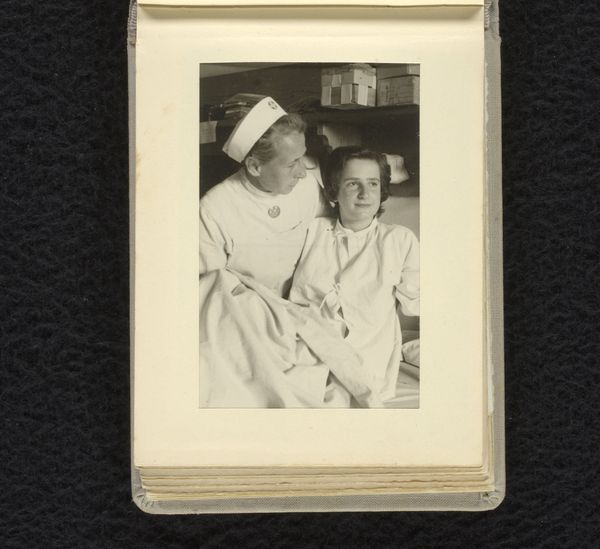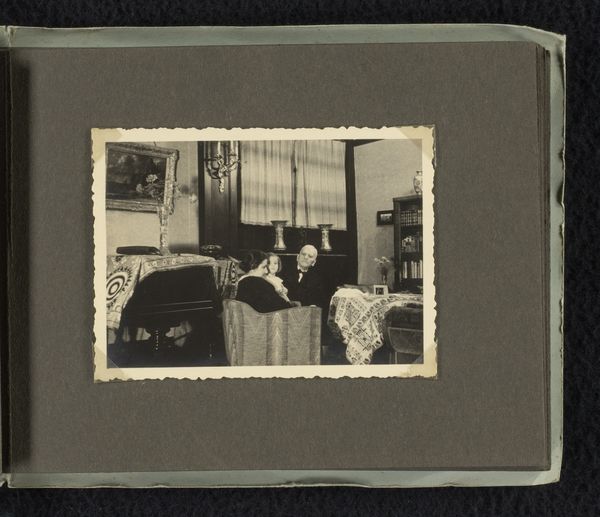
Isabel Wachenheimer in huiselijk tafereel met haar vader Eugen Wachenheimer en haar moeder Else Wachenheimer-Moos in de woning van de familie Wachenheimer c. 1932 - 1937
0:00
0:00
photography
#
portrait
#
photography
#
intimism
#
realism
Dimensions: height 70 mm, width 95 mm, height 120 mm, width 170 mm
Copyright: Rijks Museum: Open Domain
Editor: Here we have a photographic print, probably from the mid-1930s. It depicts Isabel Wachenheimer with her parents, Eugen and Else. It's so intimate. I'm curious, what stands out to you in this photograph? Curator: I'm immediately drawn to the materiality of this object – the photographic print itself. Consider the labor involved in its production. From the manufacturing of the film and camera to the darkroom processes. It makes me wonder, what social class did the Wachenheimers belong to? Access to photography and portraiture was not universal at this time. Editor: That's a perspective I hadn't considered. I was more focused on the subjects. The scene has an intimacy suggesting a comfortable family life, you know? Curator: Intimacy is key, but consider the contrast. This photograph, likely a precious memento of familial bliss, exists within a specific historical context. It makes me think of other portraiture from the period, who had access, and what did they value portraying. Was it about documenting life, or putting a certain lifestyle on display? Editor: I see what you're saying. Thinking about photography as a commodity of that era changes the whole perspective. Did posing for a photo like this have some cultural capital for the Wachenheimers? Curator: Precisely! And how was that cultural capital constructed? Through access to technology, leisure time, and perhaps a certain aspiration? Also, consider what we are missing, how did the political instability shape that everyday life in the Wachenheimer's household? Editor: That makes you wonder what's *not* being captured. It provides an entirely new layer to unpack! Curator: Exactly. By exploring the material means of production and consumption, we unveil the social forces that shape even the most intimate representations. Editor: I'll definitely approach photographs from that era differently now. Thanks!
Comments
No comments
Be the first to comment and join the conversation on the ultimate creative platform.
